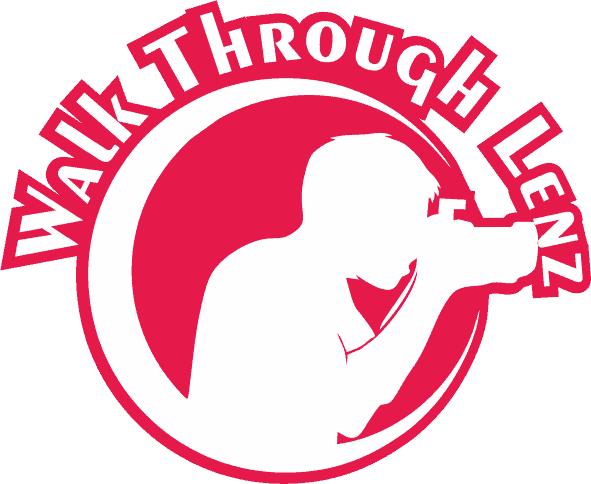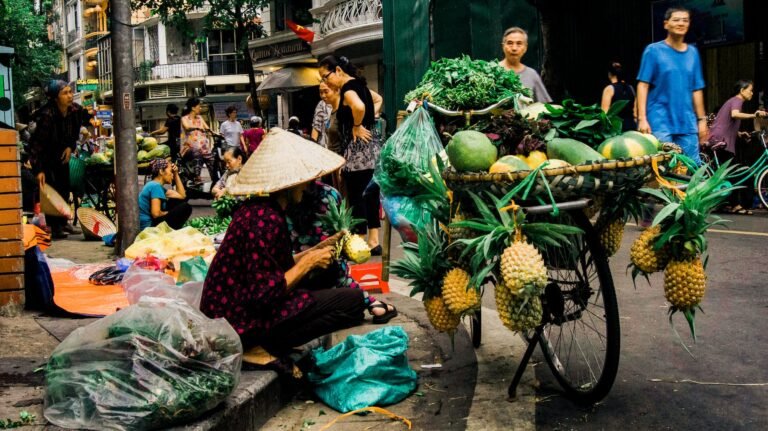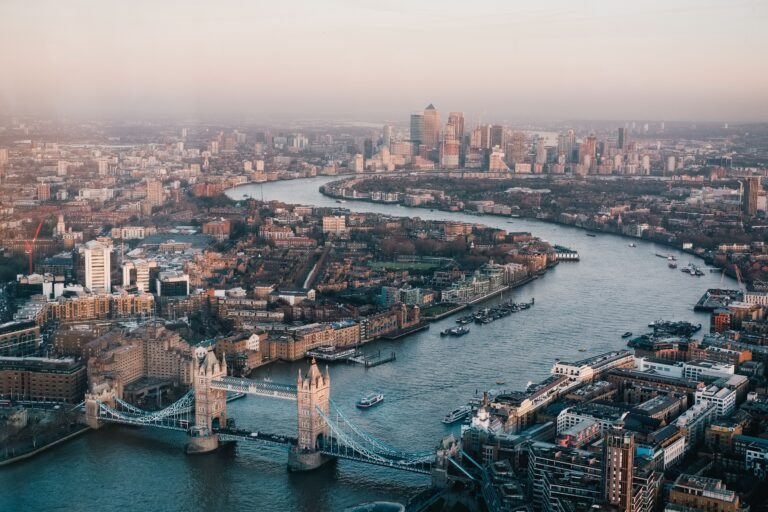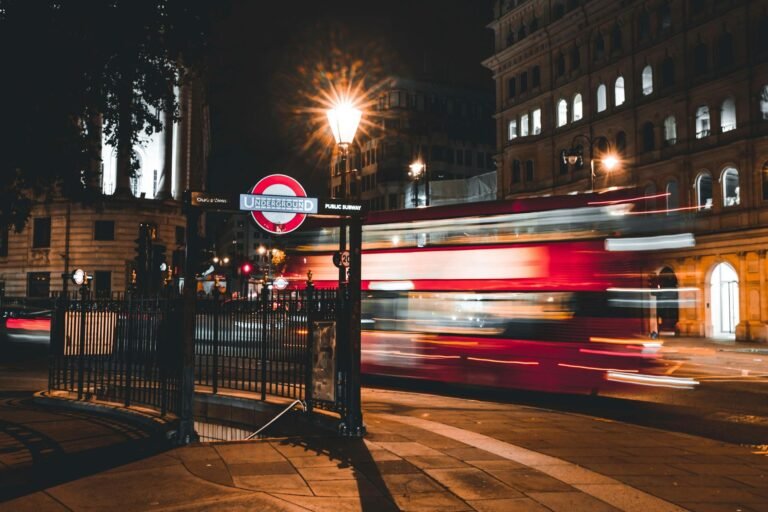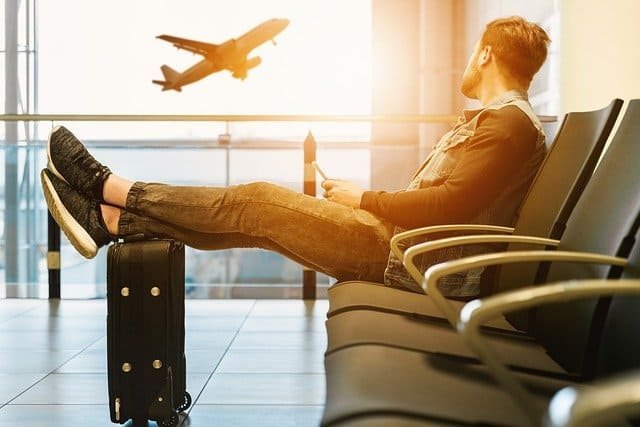London, the capital of the United Kingdom is one of the most visited cities in the world. Rich in historical landmarks like Big Ben and the Tower of London, the city is a vibrant tapestry of cultural diversity. Modern London, with its iconic landmarks such as the London Eye, the Shard, and the Sky Garden, fascinates on every level.
Explore charming pubs and some of the world’s best museums (many of which are free), or immerse yourself in the grandeur of London Theatreland with its magnificent old theaters. The culinary scene mirrors the city’s multicultural essence, offering a mouthwatering array of cuisines. And when the sun sets, London’s nightlife is nothing short of exhilarating.
Here’s a heads-up – London can be expensive, speaking from my experience as a Londoner. Your visit to the UK’s capital might dent your budget if you don’t plan ahead. But fear not! In this blog post, I’ll spill the beans on how to make the most of your time in London without burning a hole in your pocket. It’s all about enjoying the city to the fullest while keeping your wallet happy.
Table of Contents
ToggleA Brief History of London
The history of London is long and rich, dating back to its founding by the Romans around 43 AD. Here is a brief overview of key events and periods in London’s history:
- Roman London (43-410 AD): The Romans established the city of Londinium around 43 AD as a strategic bridgehead on the river Thames. It became an important trading and administrative centre in Roman Britain.
- Anglo-Saxon and Viking Periods (410-1066): After the Roman withdrawal from Britain, London went through a period of decline. The Anglo-Saxons later established Lundenwic to the west of Londinium. Viking invasions and settlements also left their mark on the region.
- Medieval London (1066-1485): The Norman Conquest of 1066 had a significant impact on London. The city grew in importance, and landmarks like the Tower of London were constructed. The medieval period also saw the establishment of guilds and the development of a thriving trade and commerce.
- Tudor and Stuart Eras (1485-1714): London continued to grow in influence during the Tudor and Stuart dynasties. The reigns of Henry VIII, Elizabeth I, and the Stuart monarchs marked a period of cultural, economic, and political development. The Great Fire of London in 1666 caused widespread destruction but also led to the rebuilding of the city.
- Georgian and Victorian Eras (1714-1901): The 18th and 19th centuries saw further expansion and industrialization in London. The city’s population exploded, and landmarks such as Buckingham Palace and the Houses of Parliament were constructed. The Victorian era was characterized by social and technological advancements.
- 20th Century and World Wars (1901-1945): London played a crucial role in both World War I and World War II. The city suffered extensive damage during the Blitz in World War II, but it was rebuilt in the post-war years.
- Post-War Period to Present (1945-present): London continued to be a global financial and cultural centre in the post-war period. It underwent significant urban development, including the construction of the London Eye and the Shard. The city also hosted the Summer Olympics in 2012.
Things to know before coming to London
Living in London for over 20 years and traveling quite a bit to other cities in the world, these travel Tips comes from my won personal experiences, I learned the hard way, it doesn’t mean you should too, coming to London for the first time or traveling in general will save a lot of stress, anxiety, and time.
London is a big metropolis, like 607sq mile big, over 9 million souls live and commute in Greater London aera, so don’t try to see and do everything on your first visit. Take your time go slow, trust me you will enjoy more than if you jam pack your itinerary on your very first visit in the big Smoke or any other city in the world.
- Weather:
- London weather can be unpredictable. It’s advisable to bring layers and a waterproof jacket, umbrella as rain is common throughout the year.
- Currency:
- The currency used in London is the British Pound Sterling (£). Make sure to have some local currency on hand, although credit and debit cards are widely accepted.
- Public Transportation:
- London has an extensive public transportation system, including buses, trains, and the famous London Underground AKA the (Tube). Consider getting an Oyster card or a contactless credit card for convenient travel and discounted fares.
- Cultural Diversity:
- London is one of the most diverse cities in the world. You’ll meet people from various cultural backgrounds, which is reflected in the city’s food, festivals, and neighbourhoods.
- Etiquette:
- British people value politeness and queuing (standing in line). Be sure to wait your turn, say “please” and “thank you,” and respect personal space.
- Tipping:
- Tipping is not mandatory but appreciated for good service., and it’s common to leave around 10-15% in restaurants if a service charge is not included. Tipping in pubs is usually not as formal, but rounding up the bill is appreciated.
- Airports:
- London is served by 6 airports: London Heathrow, Gatwick, Stanstead, Luton, City airport and Southend airport. More about London airports later in this blog.
- Emergency Services:
- The emergency number in the UK is 999 for police, fire, ambulance, and other emergency services.
- Language:
- English is the official language, but you’ll hear a variety of accents and dialects. Don’t be afraid to ask for clarification if you don’t understand something.
- Time Zone:
- London is in the Greenwich Mean Time (GMT) zone. Make sure to adjust your schedule accordingly.
- Power Outlets:
- The standard voltage is 230V, and the frequency is 50Hz. The power plugs and sockets used are of type G. If your devices use a different type of plug, you may need a universal travel adapter.
- Emergency Services:
- The emergency number in the UK is 999 for police, fire, ambulance, and other emergency services.
- Language:
- English is the official language, but you’ll hear a variety of accents and dialects. Don’t be afraid to ask for clarification if you don’t understand something.
- Time Zone:
- London is in the Greenwich Mean Time (GMT) zone. Make sure to adjust your schedule accordingly.
- Power Outlets:
- The standard voltage is 230V, and the frequency is 50Hz. The power plugs and sockets used are of type G. If your devices use a different type of plug, you may need a universal travel adapter.
Remember to check for any travel restrictions, visa requirements, or health and safety guidelines before your trip. Enjoy your time in London!
When to visit London?
The best time to visit London depends on your preferences and the type of experience you are looking for. Here are some considerations for different seasons:
- Spring (March to May):
- Spring is a lovely time to visit London as temperatures begin to rise, and the city’s parks and gardens come to life with blooming flowers.
- The weather is generally mild, and you can enjoy outdoor activities without the summer crowds.
- Spring events include the Chelsea Flower Show and various cultural festivals.
- Summer (June to August):
- Summer is a popular time to visit London, with longer daylight hours and a lively atmosphere.
- Expect warmer temperatures, but also more tourists. Popular attractions and parks can be busier during this season.
- Outdoor events, festivals, and open-air concerts are abundant in the summer.
- Autumn (September to November):
- Autumn in London brings cooler temperatures and colourful leaves, making it a picturesque time to visit.
- Crowds begin to decrease after the summer peak, and you can still enjoy outdoor activities.
- Considerable cultural events and exhibitions often take place during the autumn months.
- Winter (December to February):
- Winter in London is festive, with Christmas decorations adorning the streets and various holiday markets.
- While temperatures can be chilly, it rarely gets extremely cold. Pack accordingly.
- Winter is an excellent time to explore London’s indoor attractions, museums, and theatres.
- Events and Festivals:
- Consider any specific events or festivals you might want to attend. London hosts a variety of cultural events, parades, and celebrations throughout the year.
- Budget Considerations:
- Travel costs can vary depending on the season. Accommodation and flights might be more affordable during the shoulder seasons (spring and autumn).
- Weather Considerations:
- London weather is often unpredictable, but in general, temperatures are moderate. Bring layers and a waterproof jacket, regardless of the season.
Ultimately, the best time to visit London depends on your personal preferences regarding weather, crowds, and the type of activities you want to experience. Each season has its unique charm, so choose the time that aligns with your interests and schedule.
Where to stay in London?
Choosing where to stay in London depends on various factors, including your budget, interests, and preferred neighbourhoods. London is vast and diverse, with different areas offering distinct atmospheres. Here are very important and popular areas to consider.
I’ve grouped the areas into sections according to their respective prices:
- Covent Garden:
• Highlights: Lively atmosphere, street performers, theatres, and a plethora of restaurants and shops.
• Proximity to: West End theatres, British Museum, Royal Opera House, Seven Dials.
• Hotel Cost: Shoulder season prices shown. keep in mind high season rates are double. Booking well in advance can yield better prices. The average cost typically falls between:
• Hostels: from £25 upwards (booking for 1 guest)
• Hotels: £110- £350, varying based on Hotel Rating and the timing of your visit. (Booking for 2 Guests) - Soho:
• Highlights: Vibrant nightlife, trendy bars, and diverse dining options
• Proximity to: West End theatres, Chinatown, shopping on Oxford Street.
• The average cost for two guests typically ranges between £250 and £380, contingent on the hotel rating and the timing of your reservation. - Kensington and Chelsea:
• Highlights: Elegant architecture, museums, parks, and upscale shopping.
• Proximity to: Kensington Palace, Natural History Museum, Hyde Park, Harrods, Holand Park. - Westminster:
• Highlights: Iconic landmarks, government buildings, and the political heart of the city.
• Proximity to: Buckingham Palace, Houses of Parliament, Westminster Abbey. - South Bank:
• Highlights: Riverside views, cultural institutions, and the London Eye.
• Proximity to: Tate Modern, Shakespeare’s Globe Theatre, London Bridge. - Shoreditch:
• Highlights: Trendy and artistic neighbourhood with street art, independent boutiques, and a lively nightlife.
• Proximity to: Brick Lane, Old Spitalfields Market, Shoreditch High Street. - Camden:
• Highlights: Alternative and eclectic atmosphere, famous market, and live music venues.
• Proximity to: Camden Market, Regent’s Canal, music venues like the Roundhouse. - Notting Hill:
• Highlights: Colourful houses, Portobello Road Market, and a bohemian atmosphere.
• Proximity to: Notting Hill Carnival, Kensington Gardens, Electric Cinema. - Greenwich:
• Highlights: Maritime history, Greenwich Park, and the Royal Observatory.
• Proximity to: Cutty Sark, National Maritime Museum, O2 Arena. - Paddington:
• Highlights: Convenient transport links, close to Hyde Park, and a mix of accommodation options.
• Proximity to: Paddington Station, Little Venice, Hyde Park.
When choosing where to stay, consider factors like transportation convenience, nearby attractions, and the overall vibe of the neighbourhood. Additionally, London’s public transportation system is extensive, so you can easily explore different parts of the city from almost any location. It’s advisable to book accommodation in advance, especially during peak tourist seasons.
London airports
Now you have decided where to stay, you ask yourself, how to get from airport to my hotel/ accommodation? No worries you are at right place, first we must know about London airports.
London is served by several major airports, each with its own characteristics and advantages. Here are the primary airports in and around London:
- Heathrow Airport (LHR):
- Location: West London, about 15 miles (24 km) from the city centre.
- Significance: One of the busiest airports globally, offering a wide range of international flights.
- Transportation: Connected to the city by the Heathrow Express train, the London Underground (Piccadilly Line), buses, and taxis.
- Gatwick Airport (LGW):
- Location: South of London, approximately 30 miles (48 km) from the city centre.
- Significance: Another major international airport with a significant number of flights.
- Transportation: Gatwick Express train, Southern trains, buses, and taxis connect the airport to central London.
- Stansted Airport (STN):
- Location: Northeast of London, about 40 miles (64 km) from the city centre.
- Significance: A hub for several low-cost and European airlines.
- Transportation: Stansted Express train, National Express coaches, and taxis provide transportation to and from central London.
- Luton Airport (LTN):
- Location: North of London, approximately 35 miles (56 km) from the city centre.
- Significance: A base for several low-cost airlines and charter flights.
- Transportation: Thameslink and East Midlands Trains connect Luton Airport to central London, along with National Express coaches and taxis.
- London City Airport (LCY):
- Location: In the Docklands area, about 6 miles (10 km) east of the city centre.
- Significance: Primarily serves business travellers and short-haul flights.
- Transportation: Docklands Light Railway (DLR), buses, and taxis provide connections to central London.
- Southend Airport (SEN):
- Location: Southeast of London, around 42 miles (68 km) from the city centre.
- Significance: A smaller airport offering flights to European destinations.
- Transportation: Greater Anglia trains, buses, and taxis connect Southend Airport to central London.
When choosing an airport, consider the location of your accommodation, the airlines serving each airport, and your transportation preferences. Each airport has its own facilities and services, catering to different types of travellers and destinations.
London Transport system / How to Get Around
London has an extensive and efficient public transport system that makes getting around the city relatively convenient. Here are the primary modes of transportation in London:
- London Underground (Tube): The London Underground is a comprehensive subway system with multiple lines covering the entire city. It’s one of the fastest ways to navigate London. A single Tube fare will cost: Zone 1 to 4 – £3.20.
- Buses: London has an extensive bus network that covers the entire city, including areas not served by the Tube. Buses are a good option for short distances or areas with limited Tube access. Single fare £1.75 which is valid for 60 minutes, you can hop on and hop off as many buses in that 1 hour.
- Overground Trains: The London Overground provides train services connecting various parts of London, especially in the outer boroughs.
- Docklands Light Railway (DLR): The DLR is an automated light metro system serving areas in East London, including the Docklands and Greenwich.
- Trams: Trams operate in South London, offering another mode of transport for residents and visitors in those areas.
- Taxis and Ridesharing: London has iconic black cabs, and ride-sharing services like Uber are also widely available for convenient point-to-point travel.
- Bicycles: London is becoming increasingly bike-friendly, with bike lanes and cycle hire schemes available. You can rent bikes for short journeys using services like Santander Cycles famous as Boris Bikes. Renting a Boris bike costs £1.75 for up to 30 minutes and 1.75 GBP for each additional 30 minutes.
- Walking: Many central London attractions are within walking distance of each other, making walking a pleasant and popular option, especially for exploring neighbourhoods. Make sure to bring a comfy walking shoe.
- River Services: The river Thames is utilized for transportation with river buses and ferries providing scenic routes and an alternative way to travel.
- Oyster Card: The Oyster card is a contactless smart card that provides a convenient way to pay for travel on public transport in London. It can be used on the Tube, buses, trams, the DLR, London Overground, and some National Rail services.
When navigating London, it’s essential to plan your routes in advance using transportation apps or maps to ensure a smooth and efficient journey. The diverse transport options cater to various preferences and are designed to make exploring the city accessible for both residents and visitors.Top of Form
15 Free Things to Do and See in London
London offers a variety of free attractions for budget-conscious travellers. Here are top free things to see and do in London:
- British Museum: While some special exhibitions may have an entrance fee, the British Museum’s permanent collection, featuring world history and culture, is free to explore.
- National Gallery: Admire masterpieces by artists like Van Gogh, Da Vinci, and Botticelli at the National Gallery in Trafalgar Square, which offers free entry to its permanent collection.
- Tate Modern: Enjoy contemporary and modern art at the Tate Modern, located in a former power station on the South Bank of the Thames. The main collection is free to access.
- Tate Britain: Explore British art from the 16th century to the present day at Tate Britain, located in Millbank. Entry to the main collection is free.
- Victoria and Albert Museum (V&A): Discover the world’s leading museum of art, design, and performance, with free entry to many of its exhibits.
- Science Museum: Engage with interactive exhibits on science, technology, and innovation. The Science Museum offers free entry to most of its galleries.
- Natural History Museum: Explore the wonders of the natural world, including the famous dinosaur exhibits. The Natural History Museum is free to enter, although some special exhibitions may have a fee.
- Hyde Park: Enjoy the serenity of Hyde Park, one of London’s largest green spaces, offering walking paths, open spaces, and the picturesque Serpentine Lake.
- Changing of the Guard at Buckingham Palace: Witness this traditional ceremony outside Buckingham Palace, where the Old Guard hands over responsibilities to the New Guard.
Time: starts at 11:00 last for 45 minutes. Check the timetable before visiting, the days changes for every month.
- The South Bank and River Thames Walk: Take a stroll along the South Bank of the Thames, enjoying iconic views of landmarks like the London Eye, St. Paul’s Cathedral, and the Shard.
- Covent Garden: Experience the lively atmosphere of Covent Garden, where you can enjoy street performances and browse the market stalls without spending a penny.
- Camden Market: Wander through the eclectic Camden Market, known for its alternative culture, unique shops, and vibrant street scenes, a vast variety of divers food scene.
- Street Art in Shoreditch: Explore the vibrant street art scene in the Shoreditch neighbourhood, wherever-changing murals and graffiti contribute to the area’s creative atmosphere.
- Museums at Night: Some museums offer special events and late-night openings, providing a unique way to experience cultural institutions after regular hours.
These free attractions allow visitors to experience the cultural richness of London without breaking the bank. Keep in mind that while entry to these sites is free, some special exhibitions or activities within them may require a ticket.
15 PAIED attractions to See and Do in London
Top of Form
London offers a multitude of paid attractions, providing diverse experiences for those willing to invest in their exploration of the city. Here are some top paid things to see and do in London:
- The Tower of London: Explore this historic fortress, home to the Crown Jewels, with guided tours and exhibitions detailing its rich history.
- The Shard: Take in panoramic views of London from the observation deck of this iconic skyscraper, the tallest building in Western Europe.
- London Eye: Experience breathtaking views of the city from one of the world’s tallest observation wheels on the South Bank of the River Thames.
- West End Theatres: Enjoy world-class theatrical productions and musicals in London’s renowned West End district, home to iconic venues like the Royal Opera House and the West End theatres.
- Warner Bros. Studio Tour London – The Making of Harry Potter: Delve into the magical world of Harry Potter with a visit to the film studio where the series was produced. Explore sets, costumes, and props from the beloved franchise.
- St. Paul’s Cathedral: Climb to the top of this iconic cathedral for stunning views of London or explore the interior with its impressive architecture and historical significance.
- Hampton Court Palace: Step back in time at this Tudor palace, famous for its stunning gardens, historical architecture, and connections to Henry VIII.
- The London Dungeon: Experience a unique blend of history and entertainment through interactive exhibits, live actors, and special effects, showcasing London’s dark and gruesome past.
- Kew Gardens: Explore the Royal Botanic Gardens at Kew, featuring a vast collection of plants, glasshouses, and beautiful landscapes.
- Madame Tussauds London: Get up close to lifelike wax figures of celebrities, historical figures, and superheroes at this popular wax museum.
- Royal Albert Hall: Attend a concert, performance, or event at this iconic venue, renowned for its stunning architecture and diverse cultural programming.
- Theatreland Walking Tour: Discover the history of London’s vibrant theatre scene with guided walking tours that showcase the famous theatres and the stories behind them.
- The Churchill War Rooms: Explore the underground bunker that served as Winston Churchill’s wartime headquarters during World War II, featuring interactive exhibits and historical artifacts.
- London Zoo: Visit one of the world’s oldest zoos, located in Regent’s Park, and enjoy a wide array of animal exhibits and interactive experiences.
- Royal Opera House: Immerse yourself in the world of opera and ballet at the Royal Opera House, known for its world-class performances and elegant surroundings.
These paid attractions offer a diverse range of experiences, from historical landmarks to entertainment and cultural enrichment. Prices and availability may vary, so it’s advisable to check the official websites and plan ahead for reservations where necessary.
Typical Costs/ Suggested Budget / Average Cost to Visit London
London is one of the most eye-wateringly expensive cities to visit in the world. Its popularity and charming appeal have Placed it on top of everyone’s ‘bucket list’ destination, with overpriced accommodations and extortionate priced experiences, from lavishly fine dining to high-end fashion Shopping.
Enjoying London doesn’t have to drain your bank account. Equipped with some clever Travel hacks and tips for transportation, accommodation, and meals to keep your expenses in check while exploring the capital of England.
if you’re traveling as a frugal backpacker, plan on dishing out around 60-70 GBP a day. This covers your hostel, using public transit or walk for free meanwhile get fit where you kill 2 birds with 1 stone, cook some of your own food, and keeping the drinks in check. Stick to the freebies like parks, walking tours, and museums, and if you’re thinking of drinking 1-2 drinks in a central London pub, throw in an extra 10-15 GBP to your daily pot or if you to save that money buy your alcohol from a supermarket. there is the possibility to spent as low as £60-£65
Traveller/backpacker: Mid-range, who wants to enjoy a bit of the nice stuff London offers £120-£150 per day, treat yourself to a cushy spot-on Airbnb, feast on local eats, sip a drink or two, ride the public transit, catch an occasional taxi, and dive into some paid activities like checking out the iconic Tower Bridge or London Eye.
Couple Travellers: budget to comfort of 300 GBP or more per day, the city’s your oyster! Snag a swanky hotel, dine on fancy-ish restaurants, sip a bit more, taxi your way around in moderation, and dive into an activity and tours per day your wanderlust desires. And hey, 300 GBP is just the starting point for comfort leaning towards Luxury— the sky’s the limit!
Family traveller: “budget to comfort”, These prices, are based on a family of 3, 2x adults and 1x child. A Hotel in Central London average £320-£485 per day. Mainly use Public Transport, Some Taxis, Airport Transfer to and From Airport (Ridesharing/uber), Dine Mostly Budget Restaurants, one Nice meal per day. 4 Paid sightseeing of your preferred attractions or landmarks this is just entry level budget, the prices for pick seasons may vairy.
Peek at the chart below for a rough idea on how to budget daily, based on your travel preferences and style.
Remember, these are daily averages, so some days you might spent a bit more, and on others, you might keep it low-key. It’s all about giving you a friendly nudge on how to map out your budget. Happy adventures! 🌍✈️💷
| Frugal Budget Traveler(single) | Mid-range Budget Traveler(single) | Budget Couple Travelers The prices are for a couple | Comfort Couple Travelers | Family Travelers (2 adults, 1 child) | Luxury Traveler | |
| Hostel/ Dorm bed | £25 (Hostel) | £80 (hotel or Airbnb | £130(Privet Room) | £180 | £300 | £1000+ |
| Food | £25 | £45 | £85 | 110 | 150 | |
| Transport | £8 | £20 | £20 | 25 | 30 | |
| Activity | £12 | £30 | £60 | 60 | 65 | |
| Average Daily cost | £70 | £175 | £295 | £375 | 545 |
Money-Saving Tips
- 1. Use Public Transport Smartly: Invest in an Oyster Card for discounted fares on buses, trains, and the Tube.
- 2. Free Attractions: Explore numerous free museums, galleries, and parks like the British Museum, National Gallery, and Hyde Park.
- 3. Meal Deals and Lunch Specials: Look for affordable lunch specials or early bird deals at restaurants.
- 4. Discount Passes: Consider tourist passes like the London Pass or CityPASS for savings on multiple attractions.
- 5. Street Markets: Visit local markets like Camden Market or Borough Market for budget-friendly food and goods.
- 6. Book in Advance: Save on theater tickets, tours, and attractions by booking online in advance.
- 7. BYOB (Bring Your Own Bottle): Choose accommodations that allow you to bring your own drinks or provide breakfast.
- 8. Walk Around: Many attractions are close enough to walk between, saving on transportation costs.
- 9. Utilize Apps: Use apps like Too Good To Go for discounted food from restaurants at the end of the day.
- 10. Utilize Discounts: Look for student discounts, group deals, or memberships that offer reduced entry fees.
- These tips can help you make the most of your money while enjoying London!
How to Stay Safe in London
Ensuring a safe stay in London involves adopting a few key practices. Always be aware of your surroundings, especially in crowded areas or public transportation. Secure your belongings to prevent theft and use reputable transportation services. Stick to well-lit and populated areas, especially during nighttime, and avoid displaying valuable items openly. Be cautious when withdrawing money from ATMs and consider using contactless payment methods. Stay informed about your surroundings and any potential travel advisories. It’s advisable to carry a photocopy of important documents and have emergency contact numbers readily accessible. Additionally, trust your instincts and seek help from authorities or locals if needed. By staying vigilant and taking common-sense precautions, you can enjoy a safe and pleasant experience in London.
- Stay Aware: Always be mindful of your surroundings, especially in crowded places or public transport.
- Secure Belongings: Prevent theft by securing your belongings and consider using anti-theft accessories.
- Choose Reputable Transportation: Opt for well-known and reputable transportation services to ensure reliability and safety.
- Stay in Well-Lit Areas: Stick to well-lit and populated areas, particularly during the nighttime, to enhance personal safety.
- Conceal Valuables: Avoid displaying valuable items openly to reduce the risk of attracting unwanted attention.
- Use Contactless Payments: Consider using contactless payment methods to minimize the need for carrying large sums of cash.
- Exercise Caution at ATMs: Be cautious when withdrawing money from ATMs, especially in less busy areas.
- Stay Informed: Stay updated on your surroundings and any travel advisories or alerts that may affect your plans.
- Carry Copies of Documents: Keep photocopies of important documents, such as passports and identification, in case of loss or theft.
- Emergency Contacts: Have essential emergency contact numbers readily accessible, including local authorities and embassy details.
- Trust Your Instincts: Listen to your instincts and, if necessary, seek help from authorities or locals in unfamiliar situations.
- By following these practical steps, you can enhance your safety during your stay in London and enjoy a worry-free experience.
